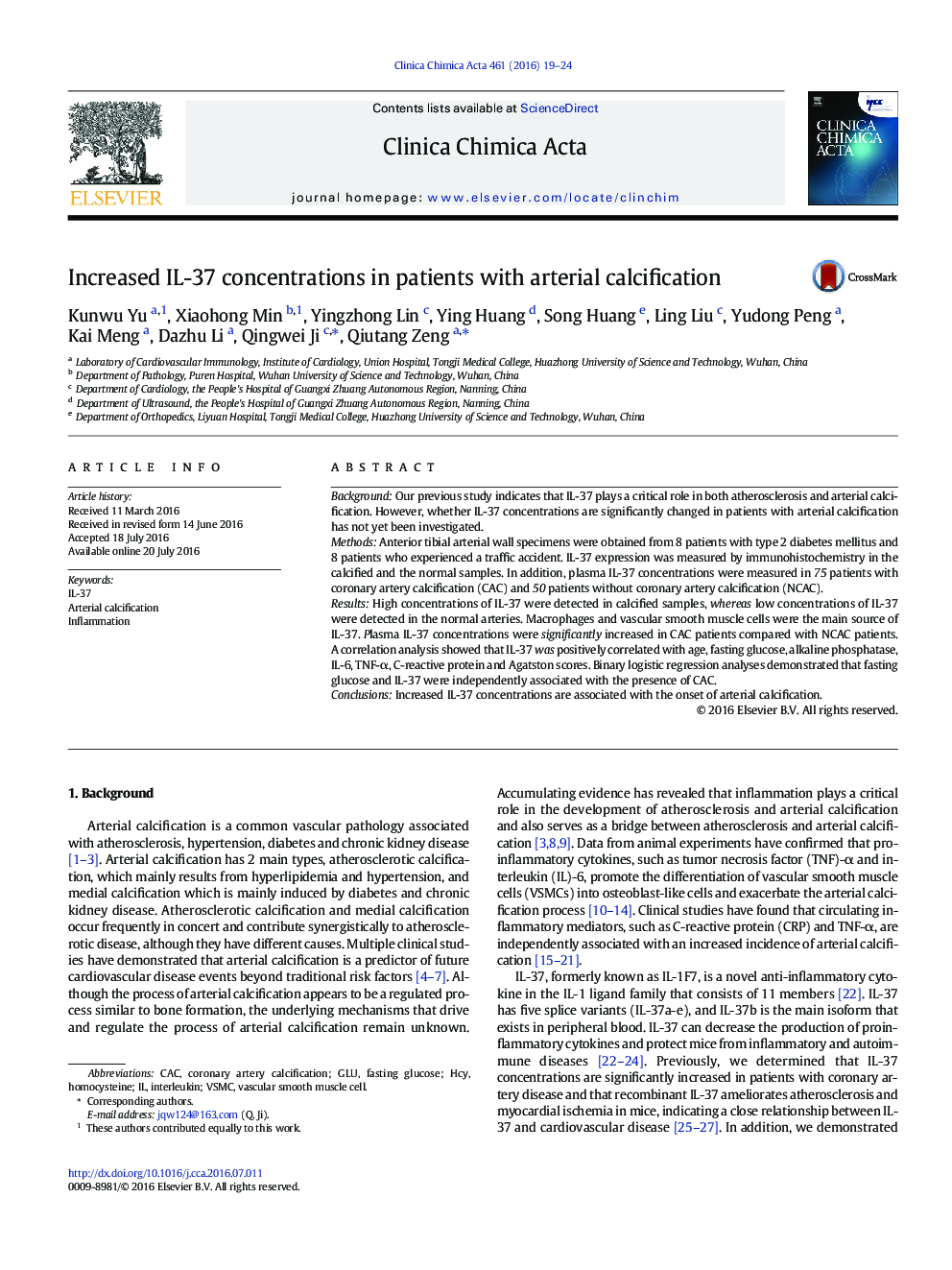| Article ID | Journal | Published Year | Pages | File Type |
|---|---|---|---|---|
| 1965065 | Clinica Chimica Acta | 2016 | 6 Pages |
•High levels of IL-37 were detected in calcified arteries.•Plasma IL-37 levels in the CAC group were significantly increased compared with those in the NCAC group.•Was positively correlated with age, fasting glucose, ALP, IL-6, TNF-α, CRP and Agatston scores.•IL-37 was independently associated with the presence of CAC.
BackgroundOur previous study indicates that IL-37 plays a critical role in both atherosclerosis and arterial calcification. However, whether IL-37 concentrations are significantly changed in patients with arterial calcification has not yet been investigated.MethodsAnterior tibial arterial wall specimens were obtained from 8 patients with type 2 diabetes mellitus and 8 patients who experienced a traffic accident. IL-37 expression was measured by immunohistochemistry in the calcified and the normal samples. In addition, plasma IL-37 concentrations were measured in 75 patients with coronary artery calcification (CAC) and 50 patients without coronary artery calcification (NCAC).ResultsHigh concentrations of IL-37 were detected in calcified samples, whereas low concentrations of IL-37 were detected in the normal arteries. Macrophages and vascular smooth muscle cells were the main source of IL-37. Plasma IL-37 concentrations were significantly increased in CAC patients compared with NCAC patients. A correlation analysis showed that IL-37 was positively correlated with age, fasting glucose, alkaline phosphatase, IL-6, TNF-α, C-reactive protein and Agatston scores. Binary logistic regression analyses demonstrated that fasting glucose and IL-37 were independently associated with the presence of CAC.ConclusionsIncreased IL-37 concentrations are associated with the onset of arterial calcification.
